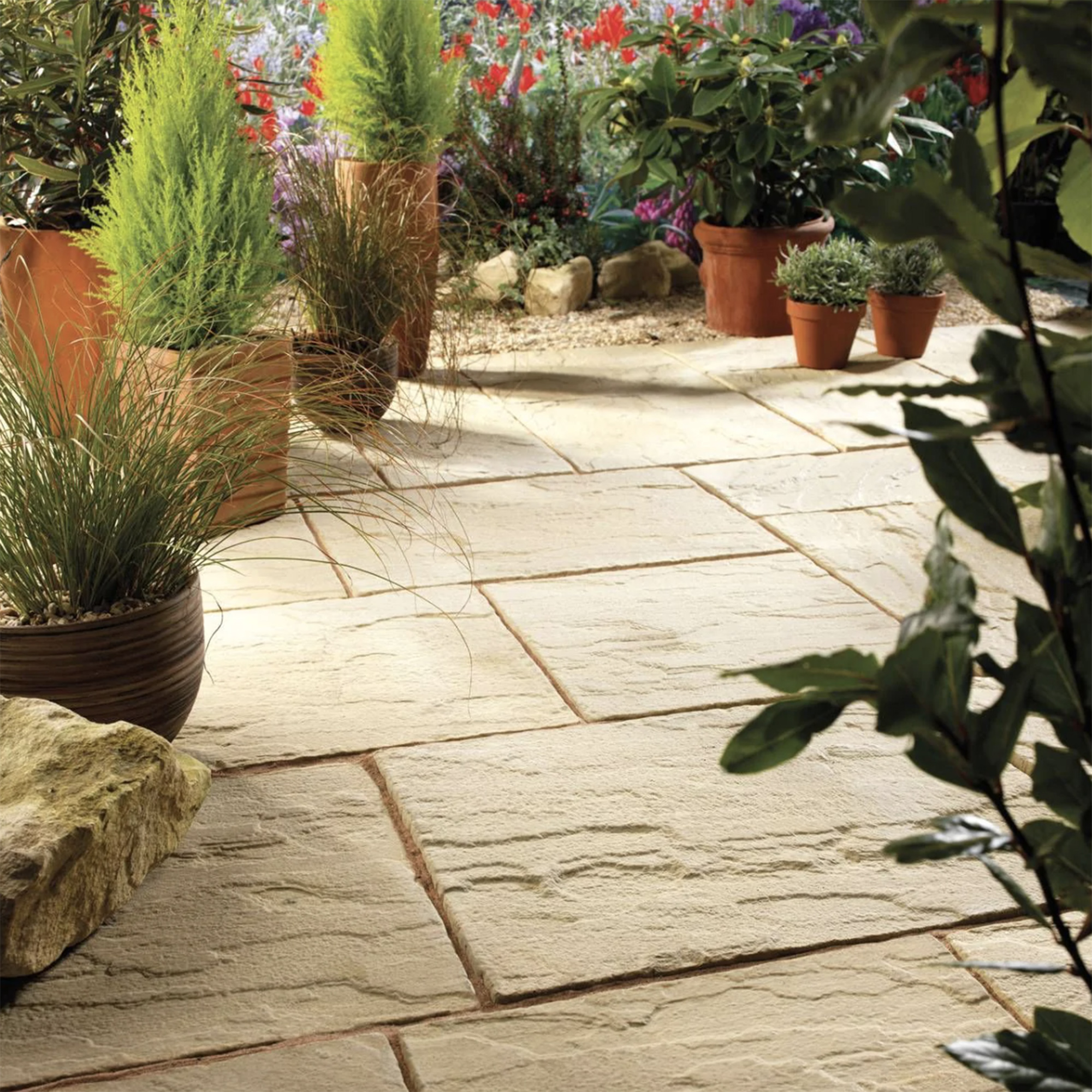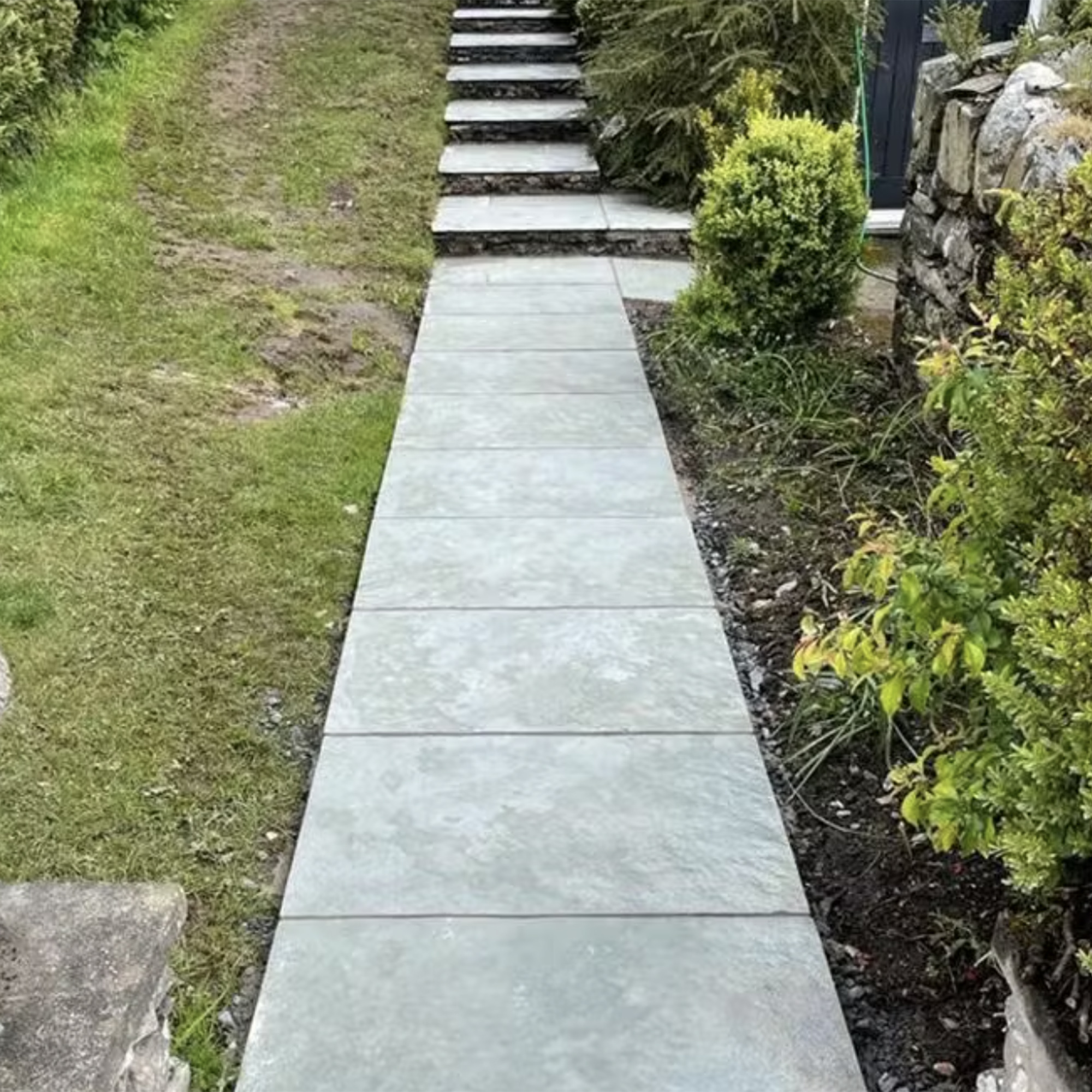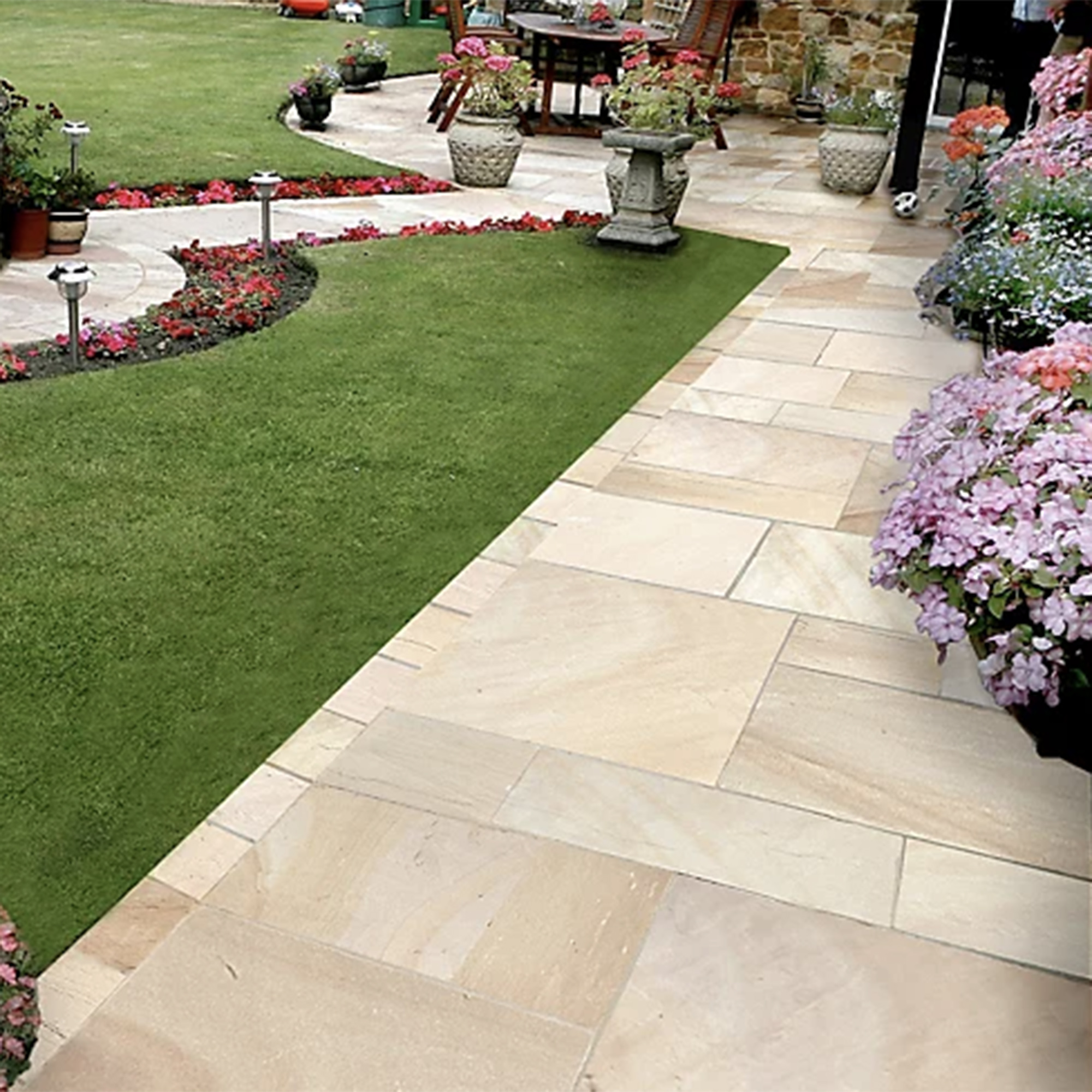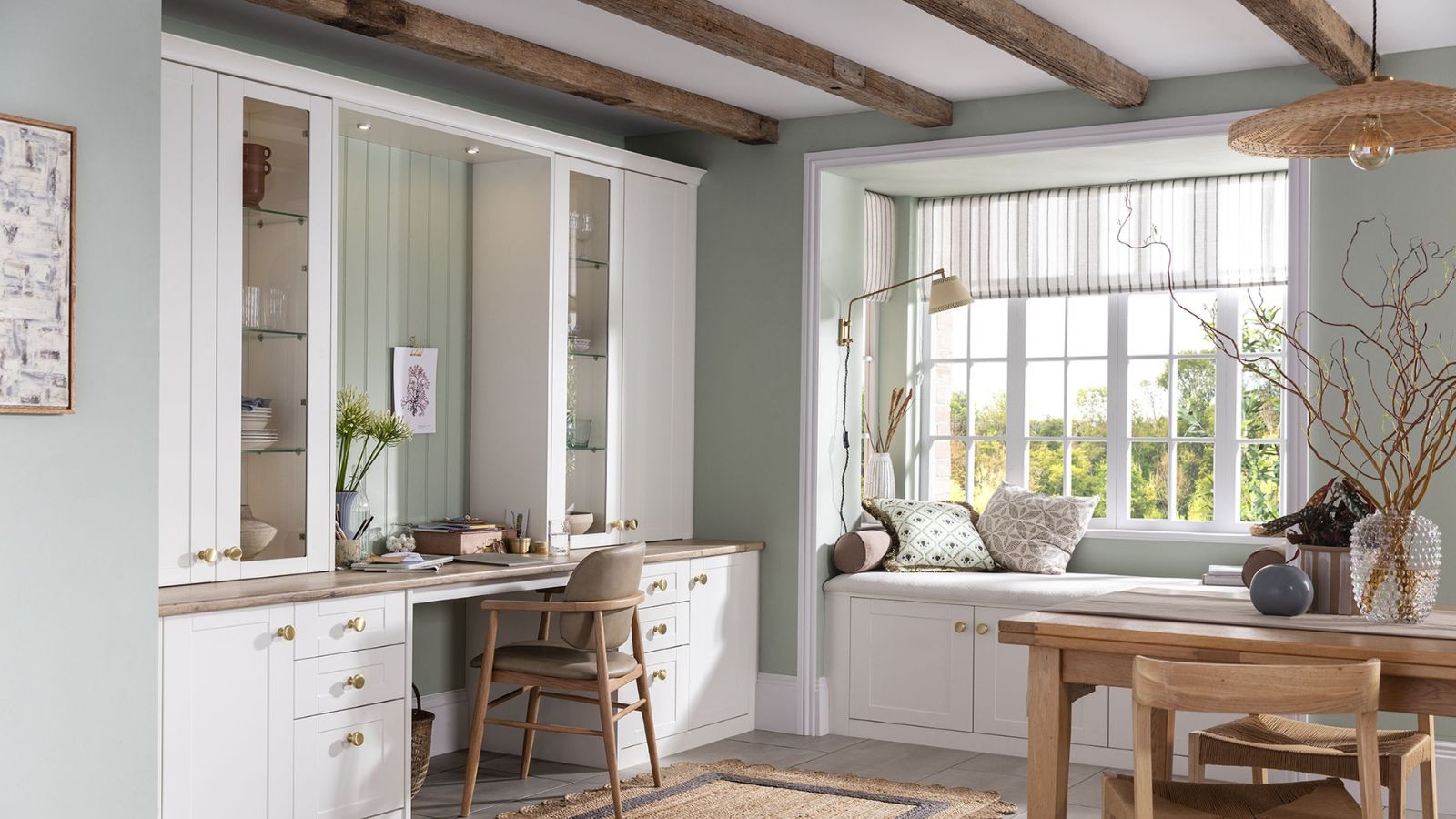12 garden path ideas for every style and budget to give your space a new look
Garden design and landscaping materials experts share their top garden path ideas
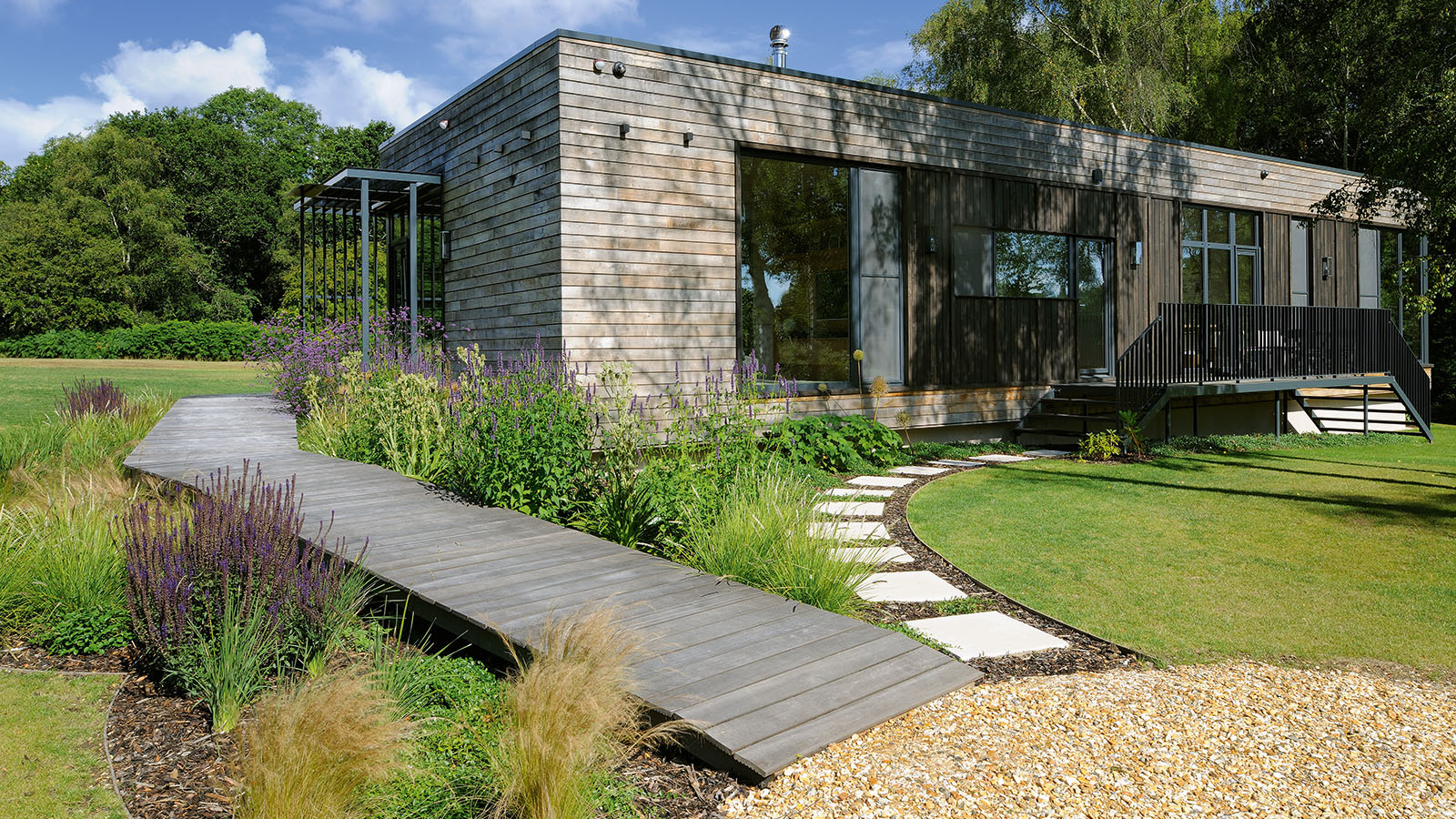
When it comes to garden path ideas, the possibilities are pretty limitless. There are a range of material considerations, colour options, shapes, widths and patterns.
They're an important garden design feature too, not only from a practical sense, allowing you to move through different garden areas with ease, but visually they connect the space and create a sense of cohesion.
Therefore taking some time to consider what you're looking for before you lay one is worthwhile. We've laid out some great options below which will help get your garden path ideas flowing freely.
12 garden path ideas to help start your design journey
"There are numerous garden landscaping materials available to create a garden pathway, from loose aggregates such as gravel, bark chipping, concreate or natural stone. The best material to use will depend on the intended purpose and location of the pathway, desired style and budget," says Ben Willis Tile Specialist, Willis & Stone.
1. Create a traditional look with stone
For those who favour a classic look then natural materials such as stone are ideal for pathways.
"A stone path is ideal for creating a traditional look - especially a paver with soft undulations and tumble edges, laid in a random pattern," says Joss Thomas, Founder & Designer at Indigenous.
Neil Bills, General Manager at Bradstone adds: "Choosing warm earthy tones can help build a classic appearance. Using irregular shapes and patterns can also add plenty of character to the pathway, enhancing that traditional feel."
Bring your dream home to life with expert advice, how to guides and design inspiration. Sign up for our newsletter and get two free tickets to a Homebuilding & Renovating Show near you.
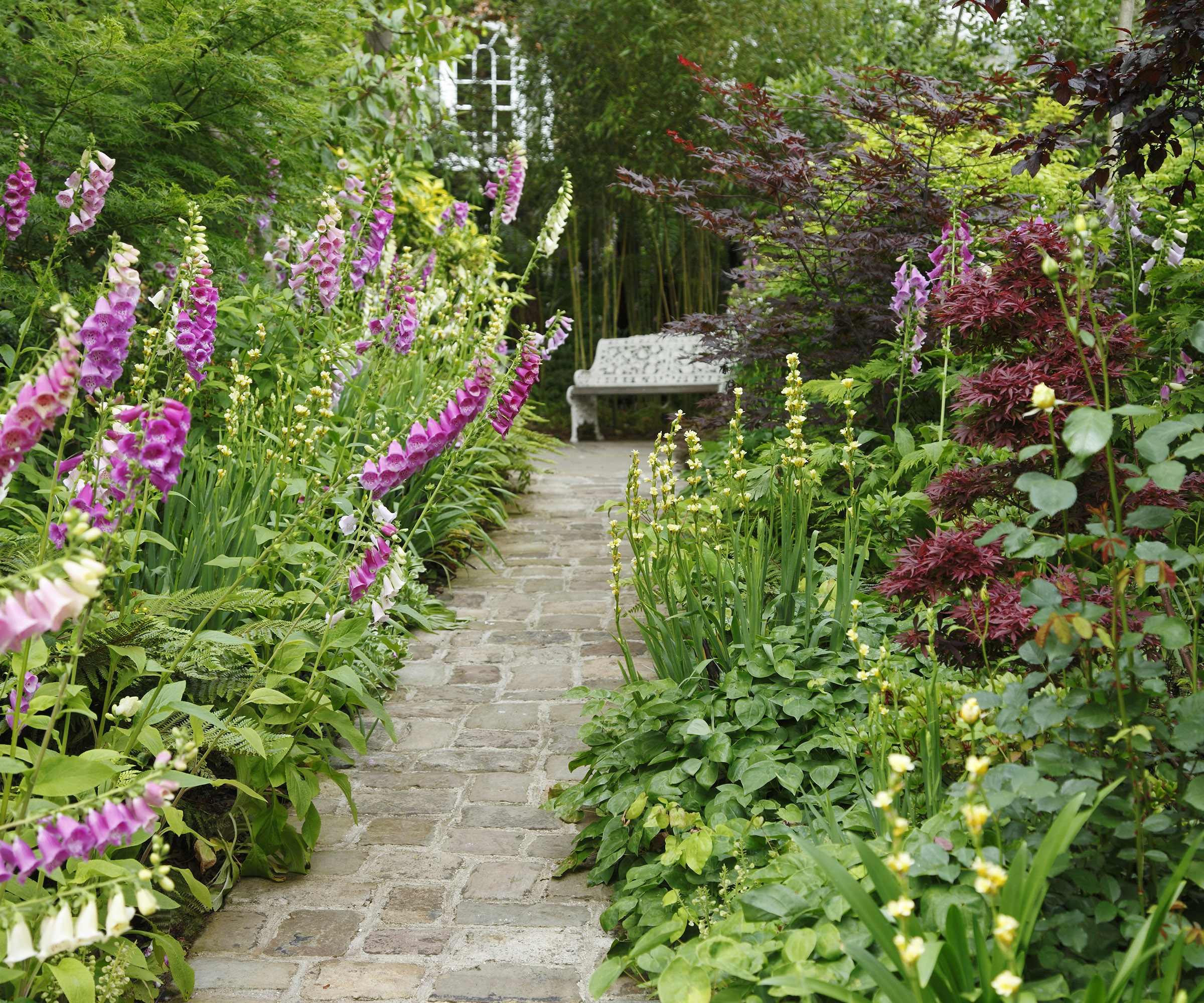

Joss works with artisans and designers from all over the world. Indigenous are passionate about nature and natural materials, about texture and form; handmade, hand-finished and unique.
Shop stone paving
2. Choose a charming brick design
"Pathways made of brick have a classic charm and lasting durability, bringing warmth and character to outdoor spaces," says garden paving expert at Allan's Gardens Jane Dobbs.
"A brick withstands heavy foot traffic and adverse weather conditions and brick pathways can last for decades with little maintenance. It's usually enough to sweep them and rinse them occasionally to keep them looking good."
"Additionally, bricks don't need regular sealing or resealing like other materials. They enhance the overall visual appeal of a landscape with their rich hues and textures. Whether it's a traditional herringbone pattern or as brick pathway edging, they can be customised to suit your taste," says Jane.
Try the Reclaimed Brick Company at eBay.

Responsible for leading the gardening team at Allan's Gardeners, a landscaping and garden maintenance, business who do lawn care and installation. She has 10 years experience as a gardener.
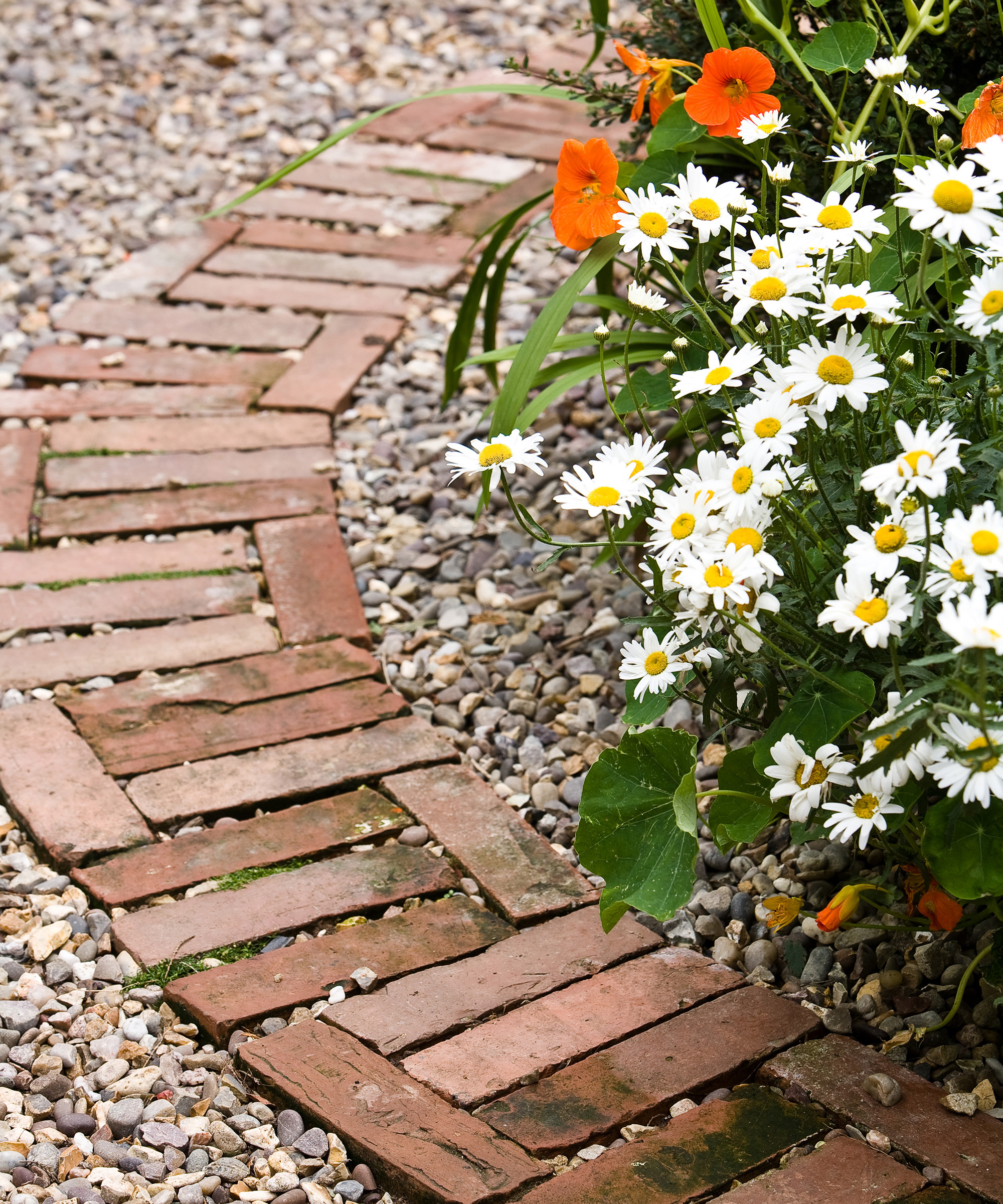
3. Get a woodland look with a bark chipping path
"Organic mulching like wood chips and bark are budget-friendly options for garden beds or naturalistic settings. It's easy to install mulch pathways - just spread a layer over your desired pathway area," says Jane Dobbs.
Bark chippings have a lovely, soft, spongy surface and give off a rich woody scent which some people will find extremely pleasing. A wood chip path is great for drainage too as it is a permeable surface, at the same time suppressing weeds.
Garden design expert Oliver Johnson at Home Advice Guide explains to create your mulch path, define the edges with stones, bricks, or lawn edging material. "This will create a clean and polished look and prevent the mulch from spreading into your flower beds," says Oliver.
We like Rolawn Landscaping Bark Bulk Bag - 500L at Wickes.
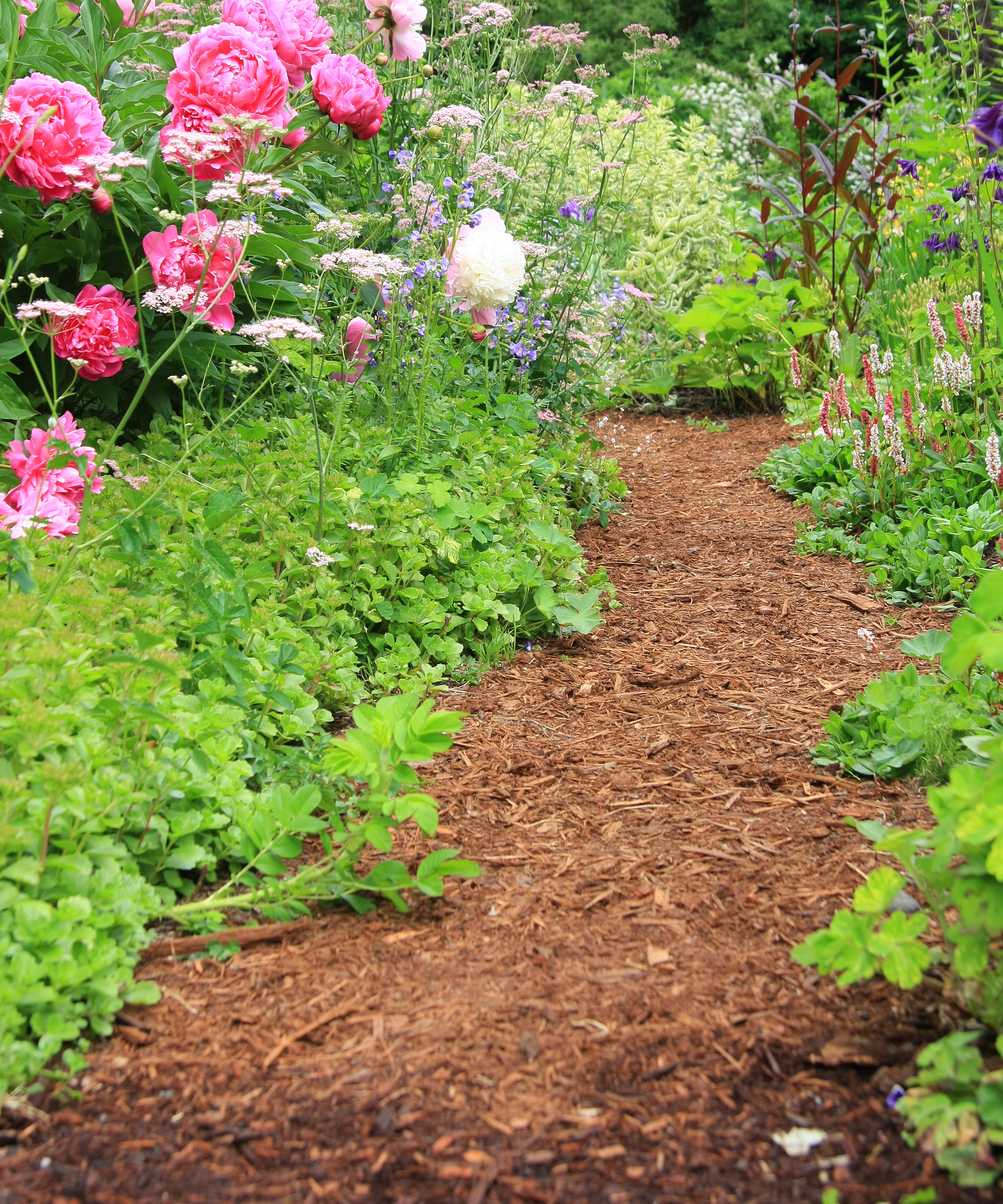
4. Lay sleek paving slabs for modern pathways
"Create the perfect modern garden using sleek and regimented square garden paving," says Tom Clifford from Gardenstone.
"I recommend having these slabs installed by a professional to ensure they are evenly spaced, this will ensure a polished and symmetrical finish. Surrounding the paving slabs with white gravel will enhance the contemporary feel," says Tom.
"Monochromatic schemes can also accentuate a minimalist aesthetic. Incorporating geometric shapes and lighting along the path can also further enhance the modern feel," says Neil Bills.

Tom has been in the garden landscaping business for over 13 years making him an expert in garden design, lawn care and maintenance. He is the director of Gardenstone Limited a garden landscaping materials company.
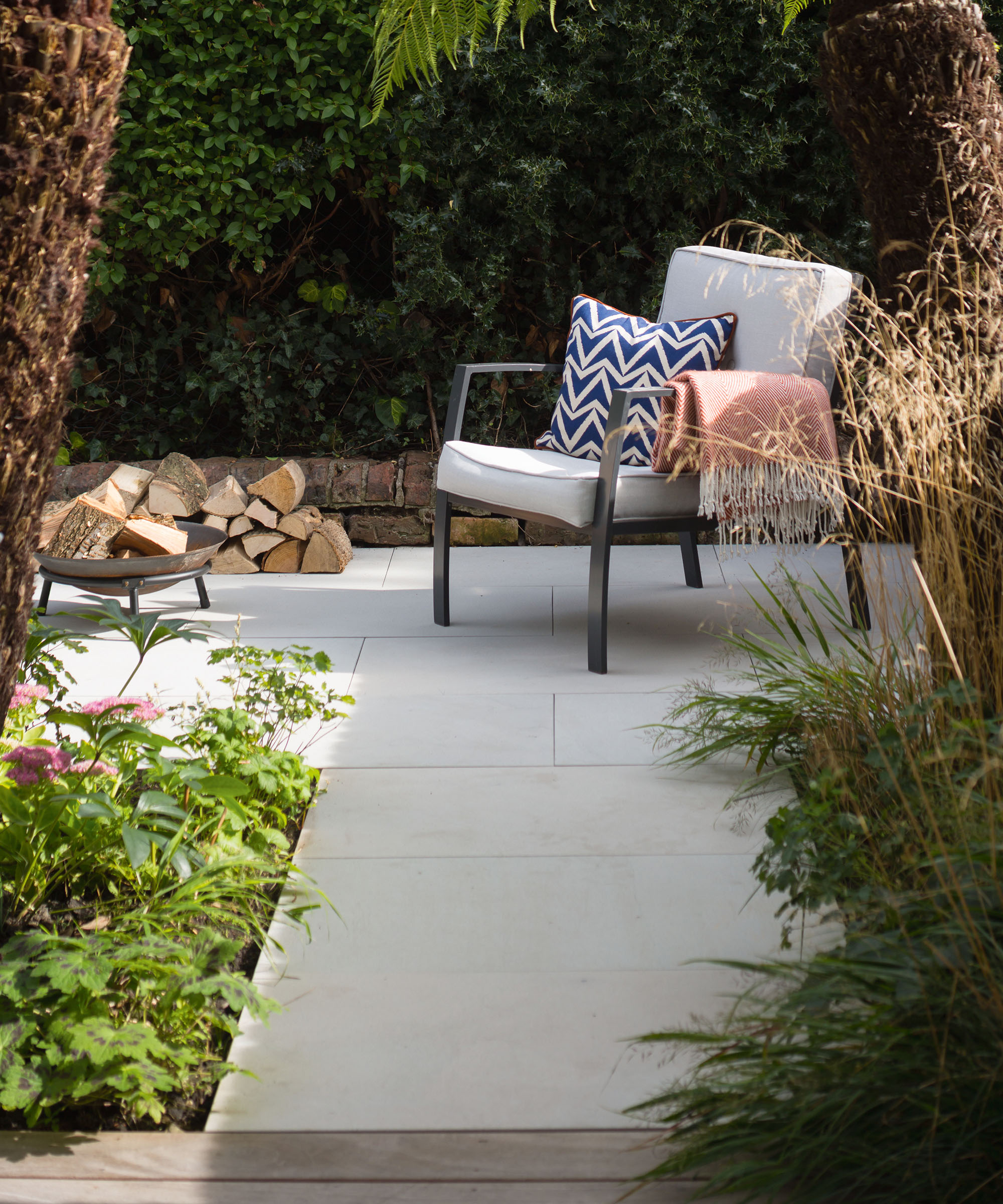
5. Add in a curved path in a small space
If you have a small space then try a softer approach with curved garden path ideas which connect different areas of your outdoor living. spaces.
"If you have a small garden then a curved pathway can create the illusion of more space. Using a winding pattern will draw the eye outwards and extend the width of your garden. Plus curved paths are far more visually appealing which can help to add personality and character to a dull garden," says Tom Clifford.

6. Or, go straight for a formal look
"If you prefer a more minimalistic design, a straight pathway is the way to go as it provides a more formal and structured appearance. It’s also a great way to draw the eye to the focal point in the garden," says Neil Bills.
Joss Thomas adds that straight paths tend to be more practical and plants can be grown to soften the borders.
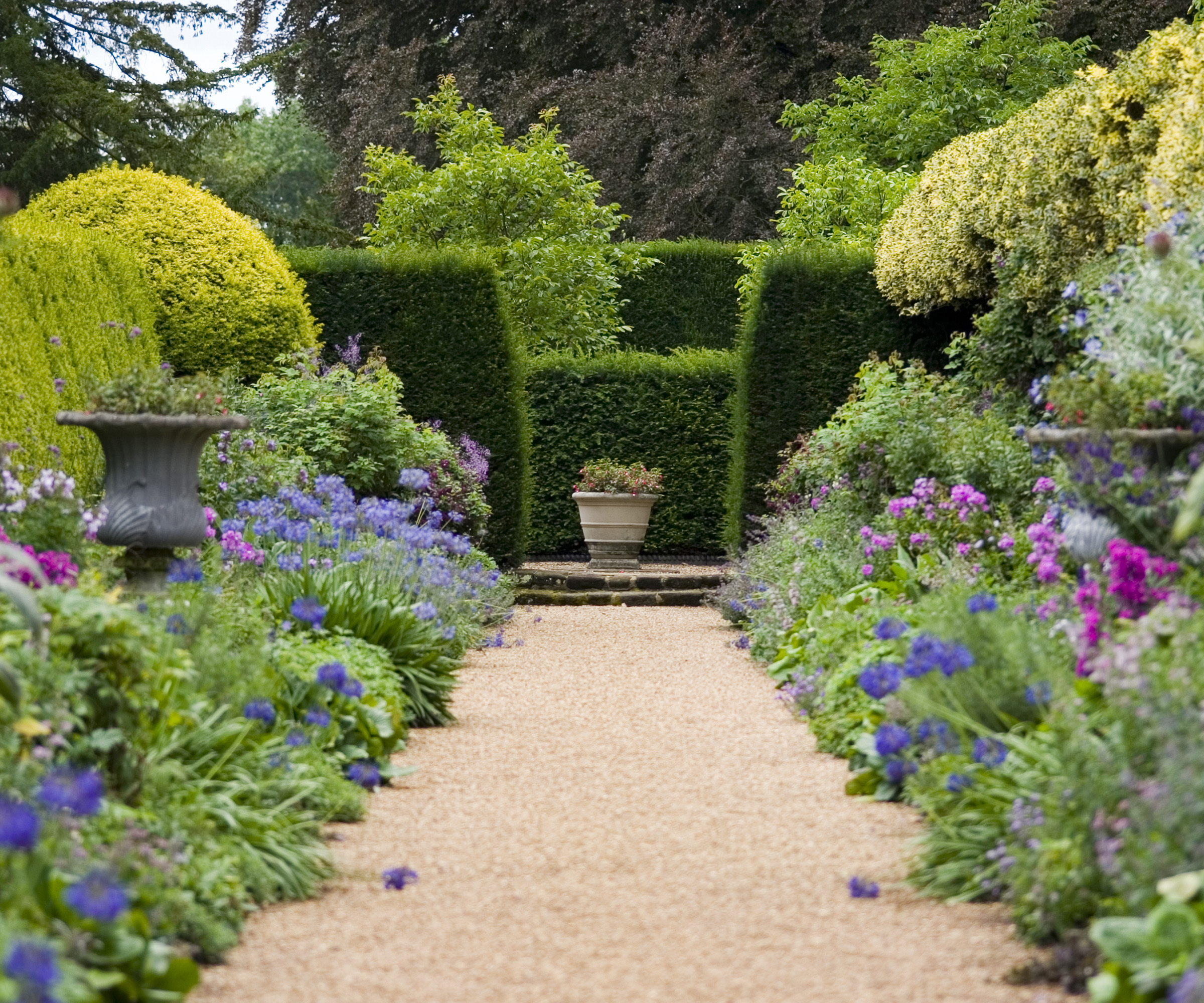
7. Try an inexpensive gravel path
"Gravel is the most affordable material to use for a garden path, plus it can be easily installed by a competent DIYer to save on labour costs. There are plenty of different shades and styles of gravel to choose from so you are sure to find one that will suit your taste," says Tom Clifford.
"Prior to installing a gravel path, ensure to remove all weeds and lay down a protective weed membrane to prevent the need for maintenance," says Tom.
Fiona Jenkins, landscaping expert at MyJobQuote makes the point that gravel garden ideas are noisy, making them good for security. "It will need topping up from time to time and may need raking back into place now and again," says Fiona.

A landscaper and gardening expert with over 25 years of experience in the industry. Currently she works for MyJobQuote as their resident expert on all things gardening. She is highly knowledgeable and her expertise have featured in many reputable publications.
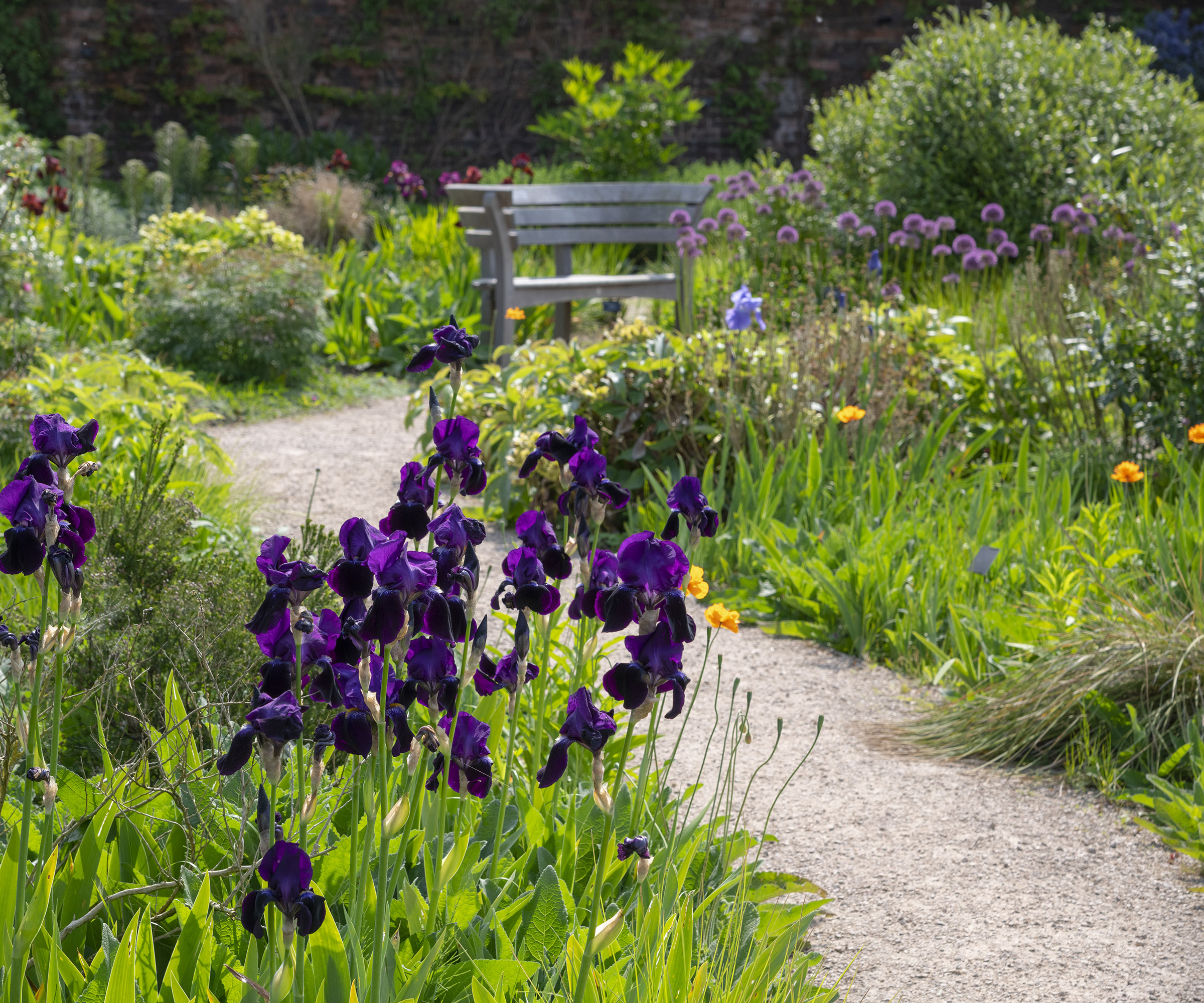
8. Consider eco-friendly options
"If you’re looking to incorporate an eco-friendly garden path, permeable materials such as gravel, recycled concrete, or reclaimed paving stones are a good choice. These materials allow rainwater to soak into the ground and can help to reduce runoff," says Neil Bills.
"There are also eco-friendly paving options that typically have a lower carbon footprint than standard paving options. This is done through using locally sourced and sustainable materials that help to minimise environmental impacts," says Neil.
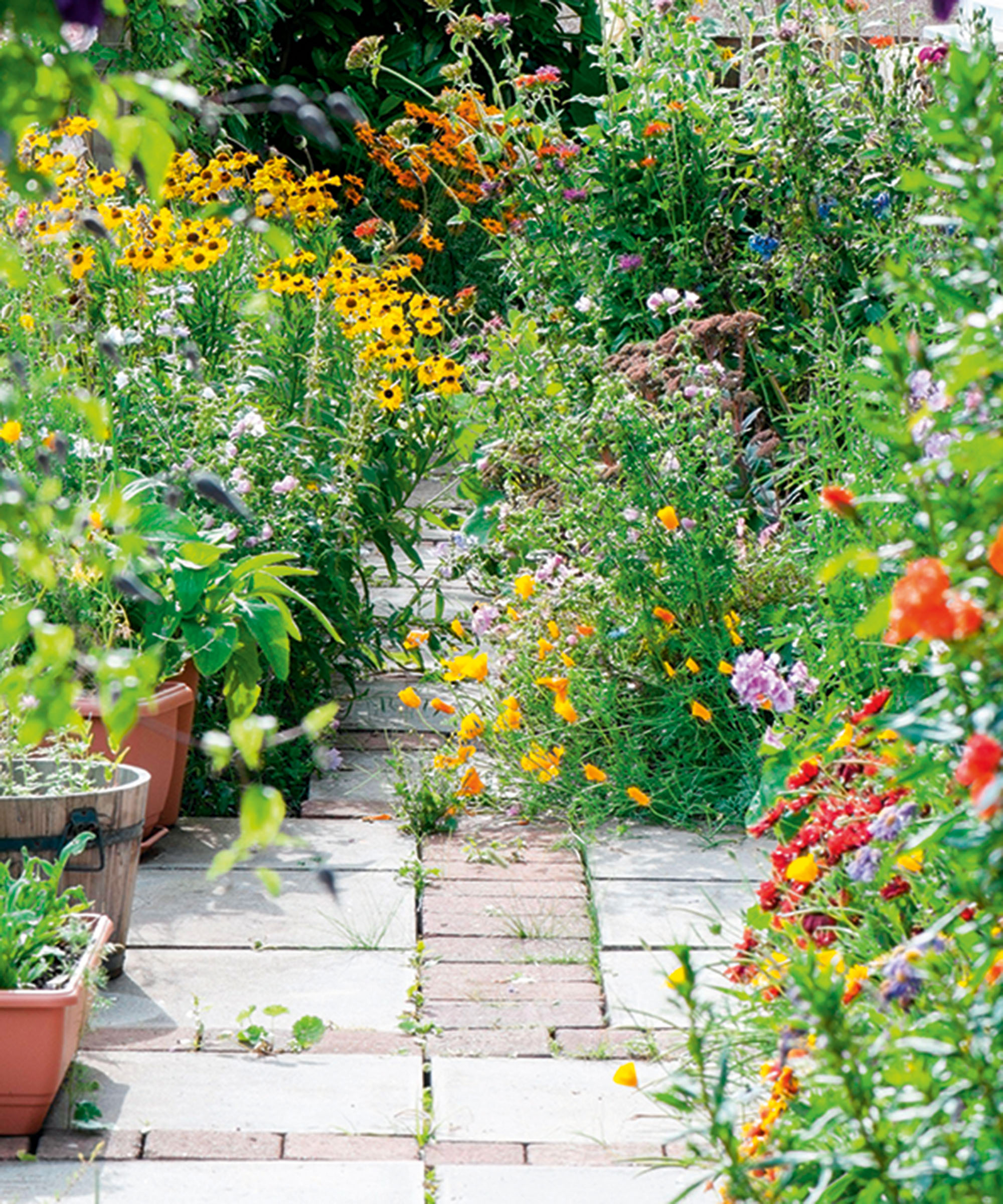
9. Opt for economical block paving walkways
For a budget friendly option try to lay block paving and to utilise a laying guide to help simplify the process.
"The key part is to ensure the edges are firmly restrained, preferably with concrete. This option is cost-effective due to lower material expenses and the majority of the work being done on a base of sharp sand rather than mortar," says Neil Bills.
"As a result, you can expect the process to be fast, straightforward, and a much more economical solution."
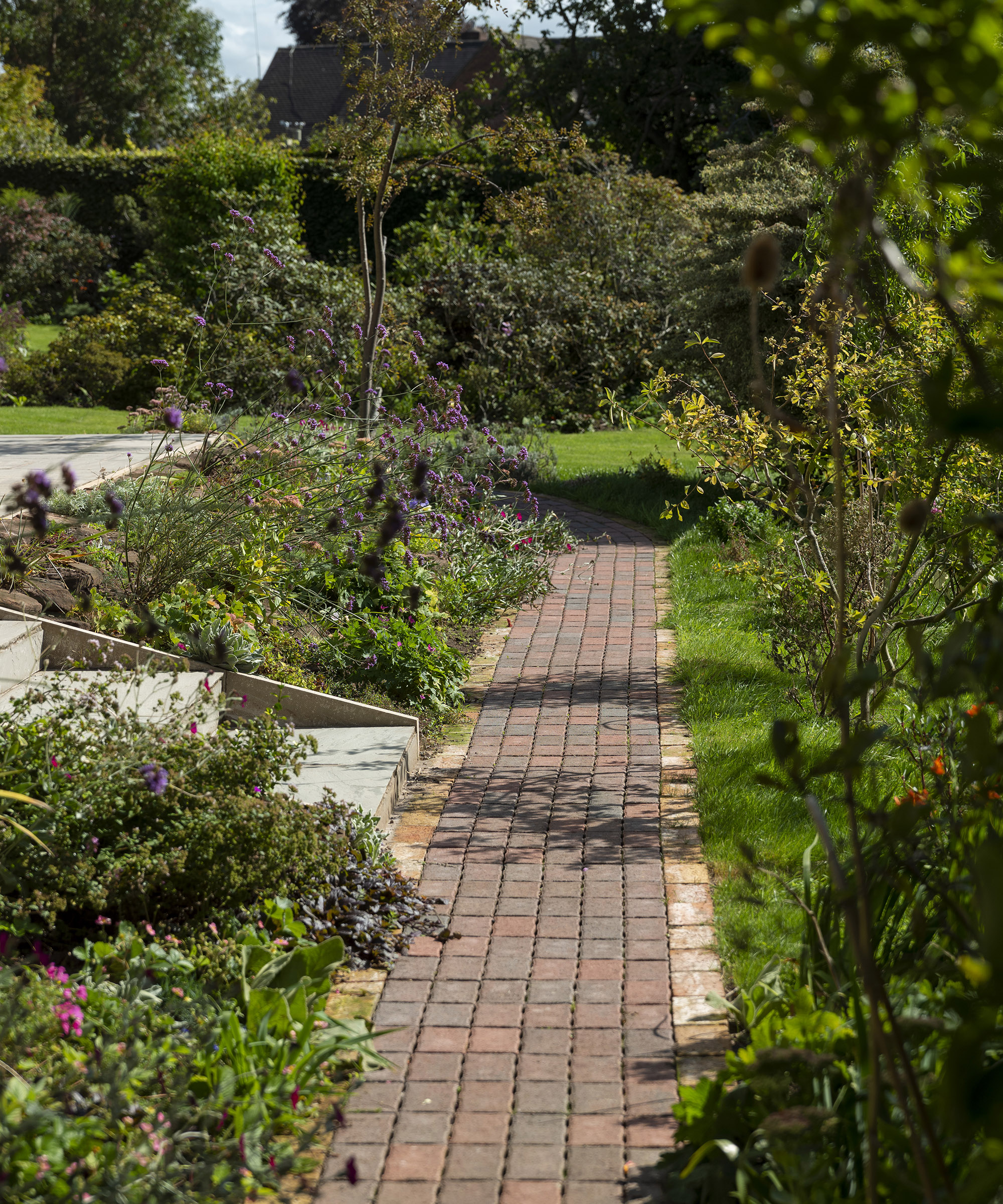
10. Line a path with plants
It's important to remember that it's not just about the path itself but what surrounds it. Melanie Hick, leader of bespoke outdoor design studio MHGD, suggests framing your path with hardy perennial plants – varieties that can withstand both hot summer sun and chilly winter frosts.
"Plants like Hollyhocks, Persovskia and even kale help create deep channels into the earth, further enhancing water drainage," says Melanie Hick. “Draw the eye down the path with a focal point. A reclaimed timber feature is ideal."
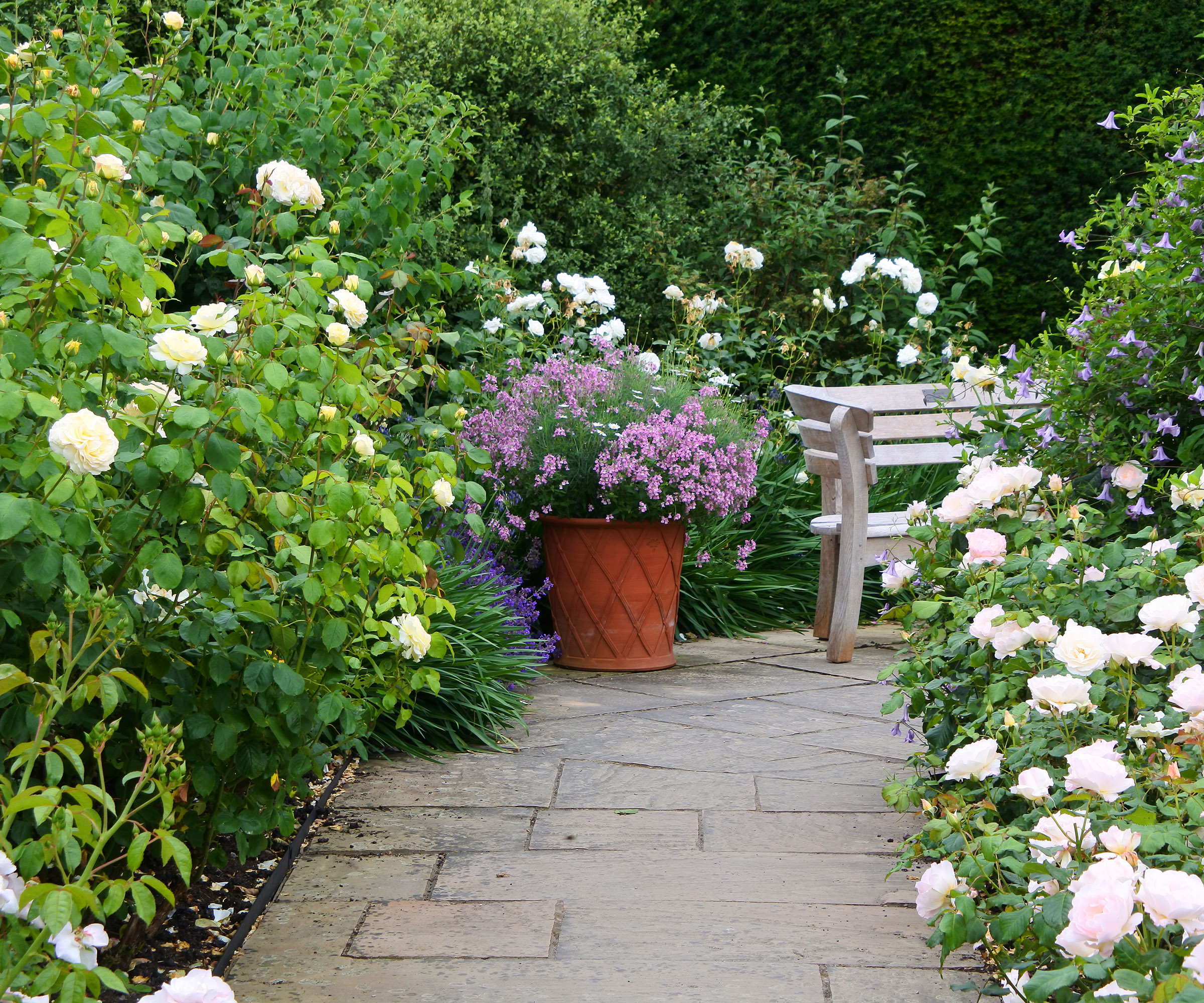
11. Try a stepped path
"Grey or white porcelain tiles will give your path a crisp, modern feel. You could border this with slim black tiles for a bit of contrast and to achieve a monochrome effect," says Fiona Jenkins.
"Long granite planks can also create a striking, contemporary path. For simplicity, you could lay them spaced out with gravel or grass in between, so you get a modern take on garden stepping stones. If you’re looking for something with more of a natural feel, you could lay a wooden boardwalk instead."
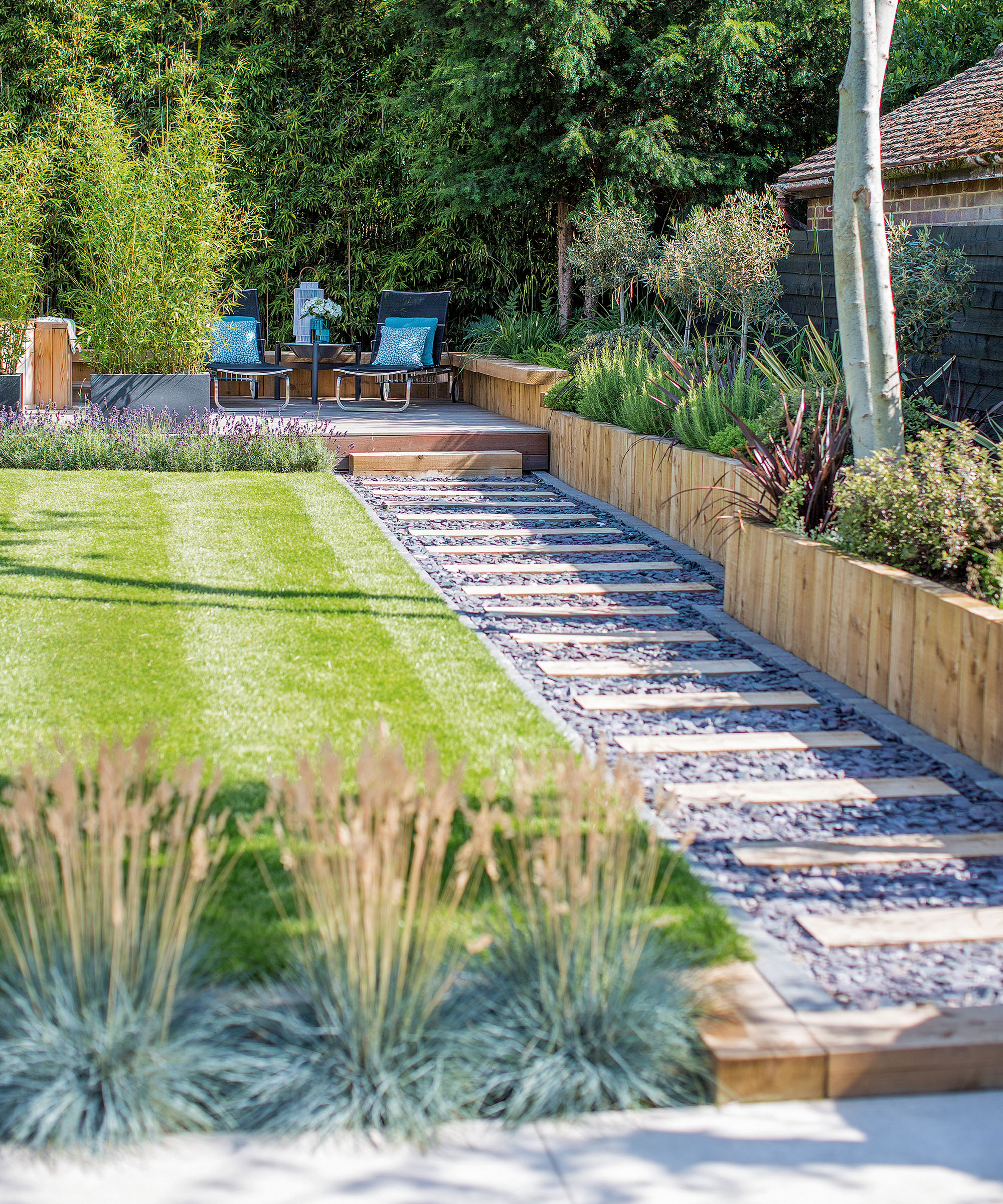
12. Mow a walkway through grass
"You can create a really easy path across your lawn by leaving your grass to grow and mow a path through it. This is great for fuss-free wildlife gardens. Another simple option is to throw down a good layer of mulch as a path," says Fiona.
"This is a great alternative to gravel and as mulch naturally keeps weeds down, you shouldn’t need to put horticultural fabric down underneath."
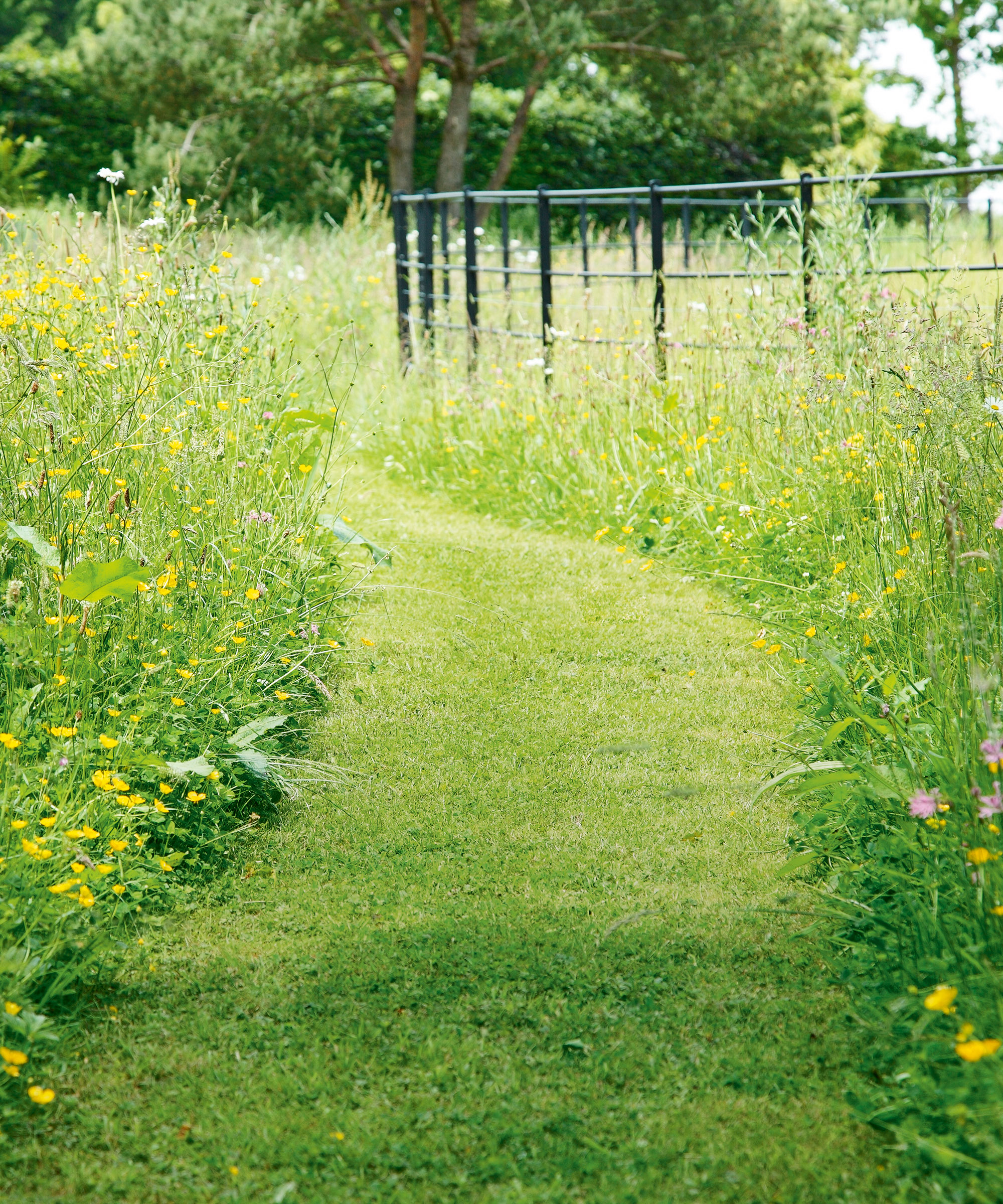
FAQs
What is the most cost-effective garden path?
"A gravel pathway is one of the most cost-effective options and it brings security benefits, as you can hear footfall. It’s also permeable, so it allows water to drain. Blown in weeds tend to establish easily though, so more maintenance will be needed," says Joss Thomas, Founder & Designer, Indigenous.
How do you make a simple garden path?
"Gravel is one of the easiest materials to use when you’re creating a path. You can simply dig a shallow trench and compact the ground. Then you line it with a weed membrane, before topping it with your gravel. You can line the path with some decorative edging but this might not be necessary if you have lawn, raised beds or similar landscaping to keep it in place," says garden expert at MyJobQuote, Fiona Jenkins.
"If you want to make it even simpler, use stone slabs or round slices of wood to create a stepping stone path. To keep them stable, dig out the ground underneath and line with sharp sand. Level this off and tap your stone into place," says Fiona.
"As both of these methods use minimal materials and can be done as a DIY project, they’re quite cheap to do."
What is the most eco-friendly path?
"Using reclaimed materials such as old bricks, tiles and stone is one of the most eco-friendly ways to make a garden path. So, don’t throw old materials away when you refurbish your home. If you need to source some reclaimed materials, eBay and Facebook Marketplace are good places to find freebies in your local area," says garden expert at MyJobQuote, Fiona Jenkins.
"If you don’t want to use traditional aggregates such as gravel, you could go with seashells instead. These are a by-product of the food processing industry, so they’d otherwise go to waste. Some eco-aggregates use recycled ceramic, glass and stone, rather than newly quarried gravel. You can buy bags of these from garden centres and online specialist suppliers," says Fiona.
If you're planning a garden path for someone with mobility issues then check out our guide to accessible garden design for expert advice.

Teresa was part of a team that launched Easy Gardens in 2018 and worked as the Editor on this magazine. She has extensive experience writing and editing content on gardens and landscaping on brands such as Homes & Gardens, Country Homes & Interiors and Living Etc magazine. She has developed close working relationships with top landscape architects and leading industry experts, and has been exposed to an array of rich content and expertise.
In 2020 Teresa bought her first home. She and her partner worked alongside architects and builders to transform the downstairs area of her two bedroom Victorian house in north London into a usable space for her family. Along the way she learned the stresses, woes and joys of home renovation, and is now looking to her next project, landscaping the back garden.
